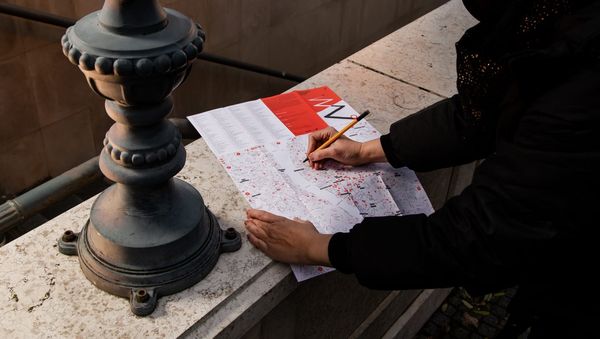Young art historian Melinda Mártonffy started to investigate the history of tenement houses with cour d’honneur within the walls of Moholy-Nagy University of Art and Design. She was so captivated by the topic that she even dedicated her thesis to it, and now, a few years later, her much-anticipated book has been published, filling a gap in the Hungarian market not only in terms of content but also in terms of design.
What is a cour d’honneur, you ask? “The so-called cour d’honneur solution evoking the shapes of Renaissance and Baroque castles also emerged in the second part of the 19th century, in the case of which a part of the tenement house’s façade (its center) is pulled back from the street front (resulting in a reverse U shaped court), thus creating a small space towards the street, known as “franciaudvar” (French yard) in Hungarian,” defines Melinda Mártonffy in her book.
The „Franciaudvaros bérházak Budapesten” (Buildings with cour d’honneur in Budapest) is the result of a years-long massive research: the readers get to explore a less known chapter of the history of the Hungarian capital’s architecture on 430 pages, accompanied by spectacular imagery. The book is not just the first publication of Melinda: it is also the first volume published by the publishing company established by her under the name ARTEM/BOOKS. We asked Melinda about her research and the birth of her book.
Many people have covered the architectural heritage of Budapest in many different ways. Your book focuses on a special type of tenement houses: buildings with cour d’honneur. Why did you choose this topic and how did your research go?
Back in my university days, when I was attending a seminar on architectural research held by dr. András Ferkai at MOME’s Design Theory MA course, I chose this as my research topic. Architecture and arts have formed an important part of my life since I was little owing to my parents, both of whom are architects. Even though they never pressured me towards this direction, somehow I still “got infected” and I started to get intrigued by this topic unwittingly. After high school, I was admitted to the Department of Art History of Eötvös Loránd University, where in the beginning I revolted against architecture, but eventually my diploma project for the MA course at ELTE was already about tenement houses with cour d’honneur. My father called my attention to this topic: he has long been intrigued by this type of buildings with forecourts, innovating tenement house construction in Budapest, and as no one has addressed this topic before comprehensively—they are only mentioned briefly in Zsuzsa Körner’s fantastic volume on urban development forms—it seemed like an ideal topic for a thesis.
This was 2013. Many years have passed since then, I did a lot of things, but I always returned to my beloved tenement houses, because I found looking for a piece of information in the archives or the library which then helped me identify more complex links simply exhilarating. I love that I can never get bored of this topic, that I can always discover something new in it, which I can be excited about, and then the small pieces eventually make up the whole.
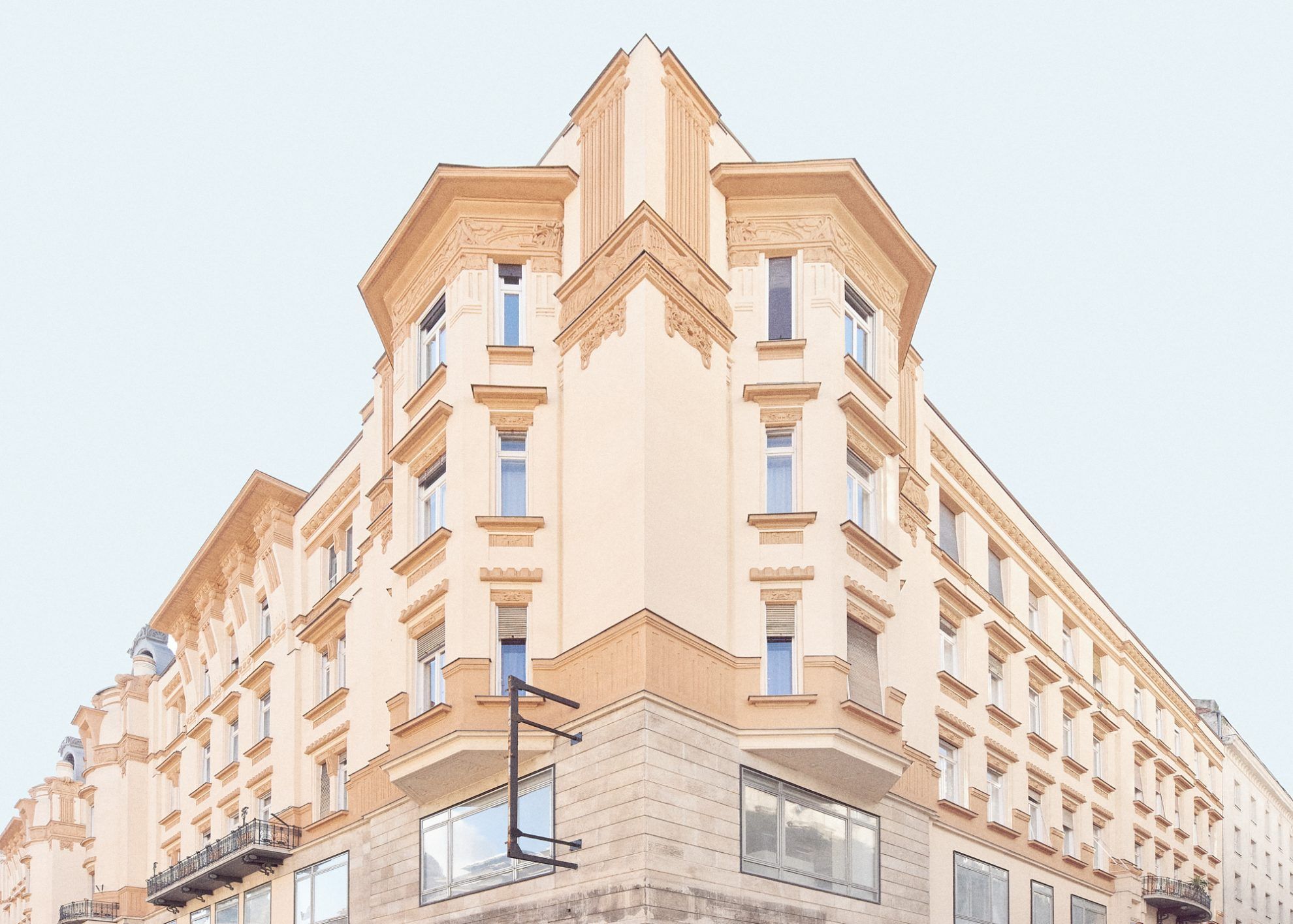
Let’s talk a little bit about the birth of your book. What aspects did you consider in terms of content and design, and who contributed to your publication?
I started working on the book actively a little more than one year ago. I knew it from the beginning that I wanted to do everything on my own. This is obviously the harder way, and authors with more experience warned me against it, but I still felt that I had so much work and effort in the research and getting the necessary funds through calls and grants that I didn’t want to compromise in terms of the specific work processes, and I especially didn’t want anyone to influence me in making certain decisions. I was also motivated by the fact that I had a clear idea about the people I wanted to work with and about the quality of the end product I wanted to see.

I asked Anna Bárdy to do the graphic design tasks related to the book. I have worked with her on several great projects in the past years, and I consider her very talented. With her, I knew it already that our work together was going to be smooth. Photographer Fülöp Schmal was recommended to me, and I asked him to do the photography part. I was convinced already by his test shots that he had a good eye for building photography—I fell in love with his photos instantly. In the case of the aerial shots, I had it easy: I asked my uncle, architect Gábor Mártonffy to take care of these, as he is an expert in architectural aerial photography.

When putting together my creative team, it was also important to work with people my age, with talented emerging designers and artists whose perspective and mentality is similar to mine, and whom I could also help by offering them a job and references. This is the design part. There is, however, another very important aspect to making a book: the quality of the text. My previous professor and mentor, architectural historian Dr. András Ferkai and his proofreading guaranteed the required quality in terms of the content. András has been there at all stages of my research: I started researching this topic on his seminar for the first time, and later on he was the consultant of my thesis at ELTE, too. It was an incredible honor that he accepted my invitation to proofread the copy, this provided a great sense of safety to me in my work.

What fascinating, interesting or less known details can we learn if we read your book?
As we are talking about a gap-filling book, so readers will get to learn almost only new things: the book gives a detailed overview of the evolution and history of the cour d’honneur buildings in Budapest, about the forerunners of this style abroad, the floorplan systems, tenement houses with special morphology (including joint courtyards and composed courtyards), the renewal of the type between the two world wars, as well as the architects who designed these houses and the relationships between them. The historical part is illustrated by archive photos and original drawings, so that the readers can see the difference between traditional tenement houses built on the entire street front and their peers featuring forecourts for themselves.

At the same time, in the spirit of entertainment, I also tried to favor those who are not interested in such depths of the topic: in the second part of the book I present the most exciting buildings in Budapest with cour d’honneur. Each building is presented in brief commentaries, spiced up with colorful stories related to the houses, illustrated by Fülöp’s gorgeous photos. One of the most important parts of my research is in the appendix: the list collecting all the building in Budapest with this type of forecourt, published with the relevant data. Finally, I compiled nine recommended walking routes so that those interested can visit these buildings and admire them in person in the framework of thematic walks.
I understand that you have also founded your own publishing house under the name ARTEM/BOOKS, and your goal is to include similar, art-related publications in your palette. Why did you consider this important and necessary?
I am deeply committed to art and design, not only because I have been breathing it in since my childhood, but also because at MOME I received a design-centered mentality from our excellent professors that still forms an important part of my life and my work to this day. Through the books I would like to share this mindset: I would like others to see how important careful design is besides content. In addition to reaching the narrow audience interested in architecture and art, I would also like to target those who are perhaps not that susceptible to these discoveries yet. I consider it my mission to raise their curiosity just as much as offering a new and deeper knowledge to the audience of art-lovers.
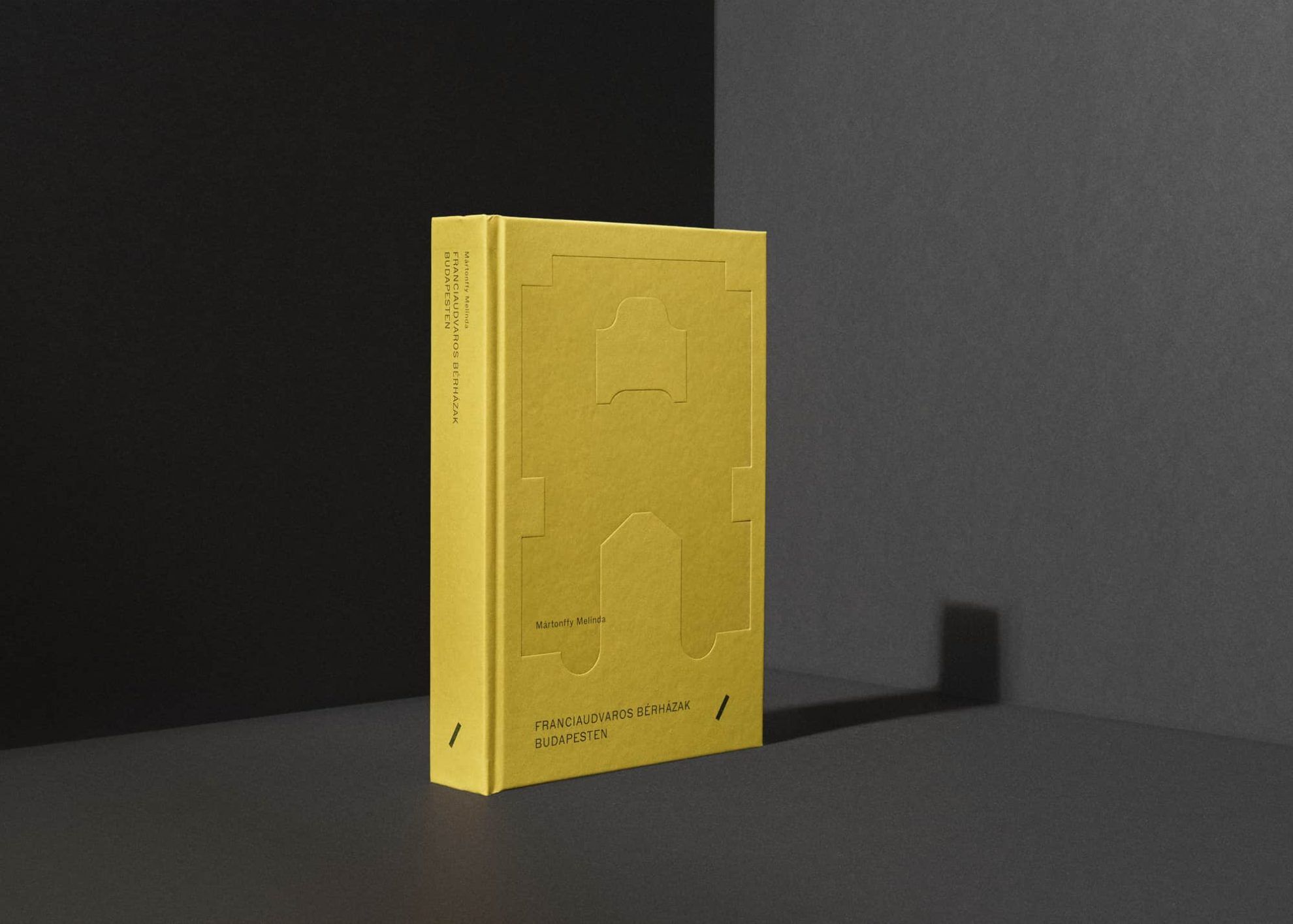
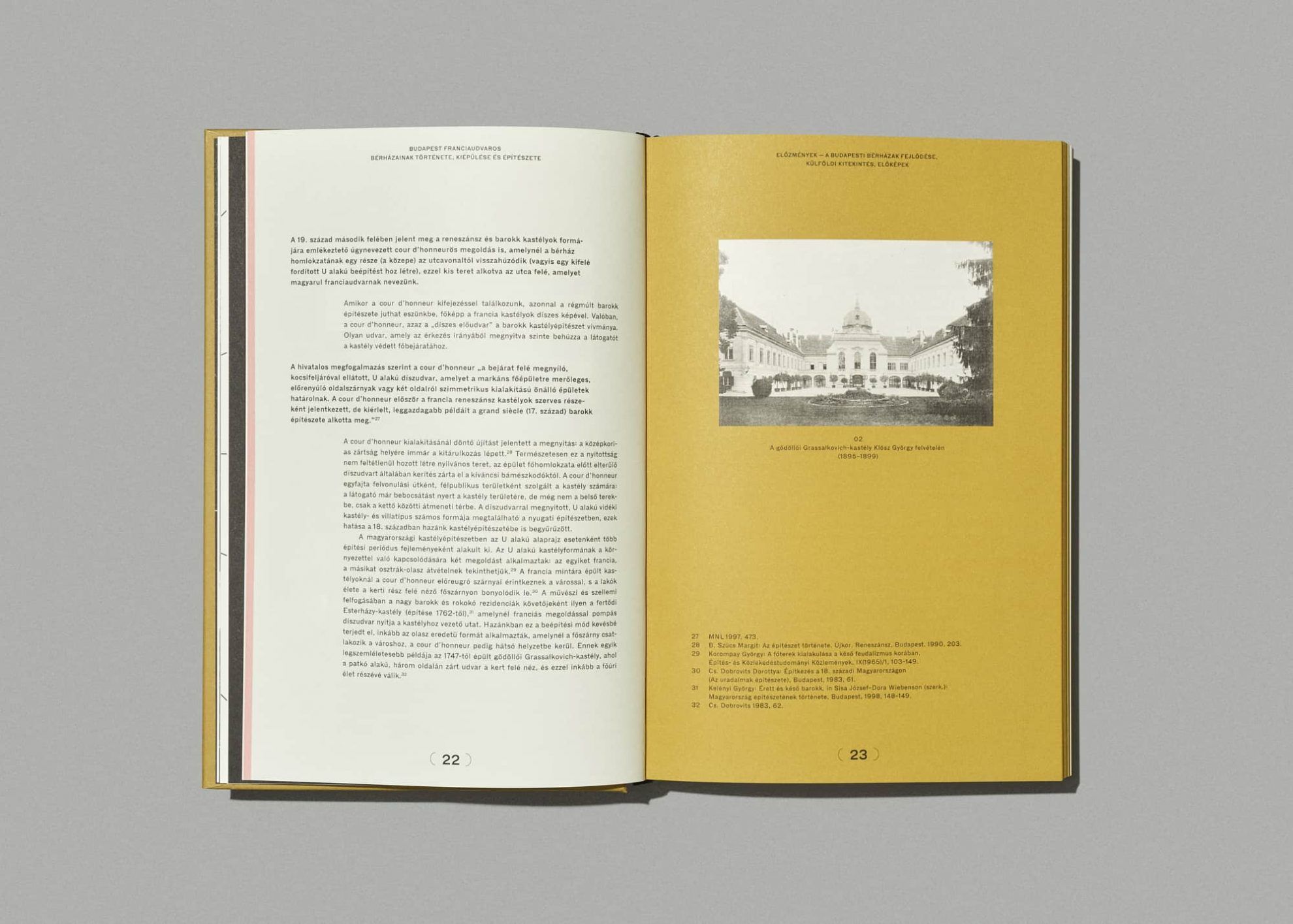
The “Buildings with cour d’honneur in Budapest” is the first publication of ARTEM/BOOKS. What books should we expect in the future, do you have any plans?
I am already planning a new publication of my own, but I also have exciting materials from other authors in my drawer that I would very much like to publish. I don’t want to spoil the details, but I can tell you that there will be books on architecture and probably on other topics, too, next year.
Where can we buy your book?
You can order the book on the website of the publishing company for a discounted price until Christmas, and it can also be purchased in larger Libri and Bookline bookstores and their online platforms.
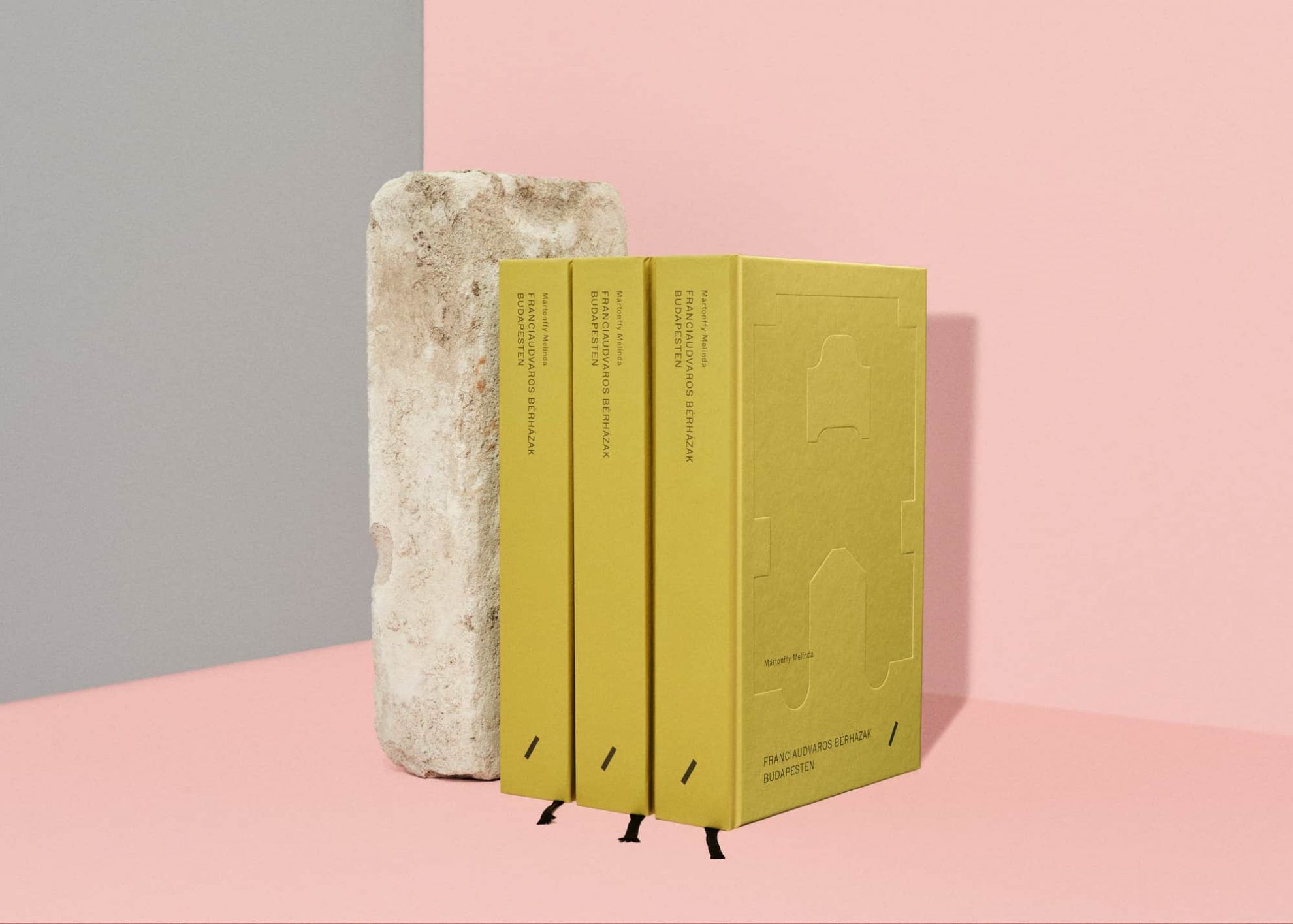
Photos: Fülöp Schmal
Aerial photography: Gábor Mártonffy

The future of urban freight transport | Mastiff Cargo Bike
